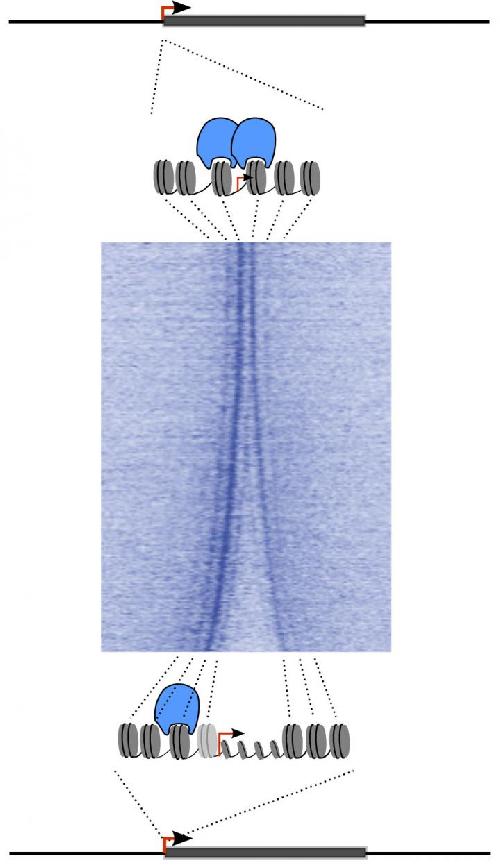An international team of biologists has discovered how specialized enzymes remodel the extremely condensed genetic material in the nucleus of cells in order to control which genes can be used. The discovery will be published in the print edition of the journal Nature on Feb. 4, 2016.
It was known that the DNA in cells is wrapped around proteins in structures called nucleosomes that resemble beads on a string, which allow the genetic material to be folded and compacted into a structure called chromatin. "We knew that the compaction into chromatin makes genes inaccessible to the cellular machinery necessary for gene expression, and we also knew that enzymes opened up the chromatin to specify which genes were accessible and could be expressed in a cell, but until now, we didn't know the mechanism by which these enzymes functioned," said B. Franklin Pugh, Evan Pugh Professor, Willaman Chair in Molecular Biology, and professor of biochemistry and molecular biology at Penn State University and one of the two corresponding authors of the paper along with Matthieu Gérard of the University of Paris-Sud in France.
The discovery was achieved by an international collaboration of scientists from the Alternative Energies and Atomic Energy Commission in France (Commissariat à l'énergie atomique et aux énergies alternatives), the National Center for Scientific Research in France (Centre national de la recherche scientifique), the University of Paris-Sud in France, Southern Medical University in Guangzhou in China, and Penn State University in the United States.

The researchers first mapped the location of several "chromatin-remodeller enzymes" across the entire genome of the embryonic stem cells of the mouse. The mapping showed that remodeller enzymes bind to particular nucleosomes "beads" at the sites along the wrapped-up DNA that are located just before the gene sequence begins. These sites are important because they are the location where the process of expressing genes begins -- where other proteins required for gene expression team up for the process of turning a gene on.
The researchers then tested how the chromatin-remodeller enzymes impact gene expression by reducing the amount of each of these enzymes in embryonic stem cells. The scientists found that some chromatin-remodeller enzymes promote gene expression, some repress gene expression, and some can do both.
"The correct expression of genes is necessary to define the identity and function of different types of cells in the course of embryonic development and adult life," said Pugh. "Chromatin-remodeller enzymes help each cell type accurately express the proper set of genes by allowing or blocking access to the critical section of DNA at the beginning of genes."




Comments